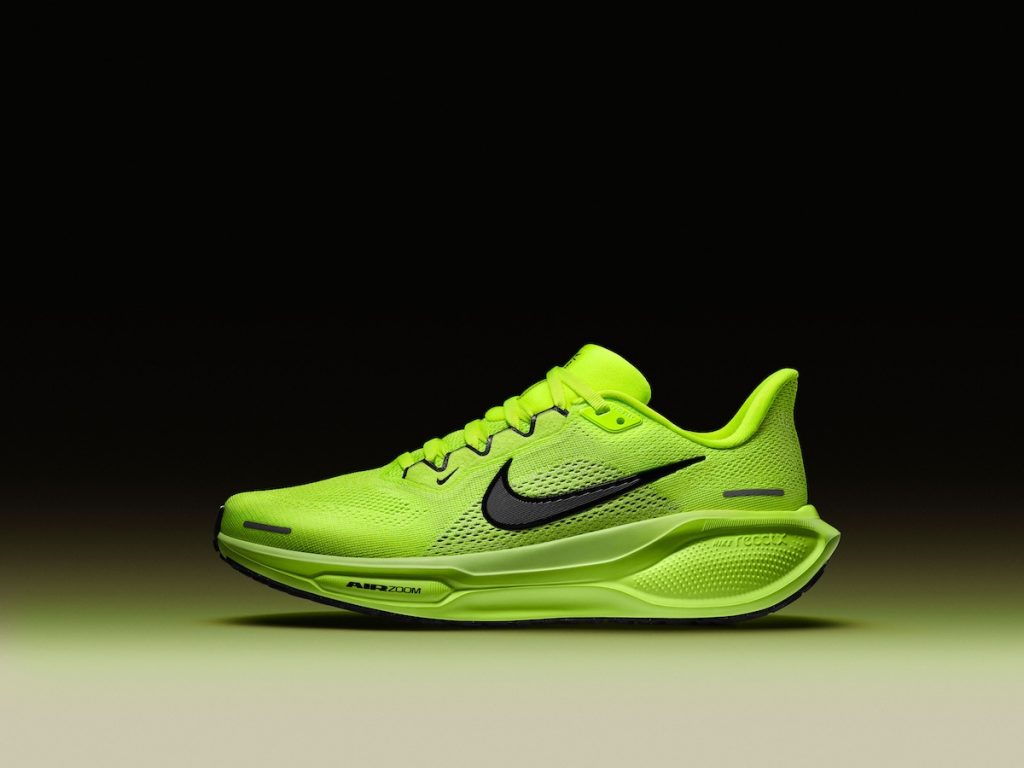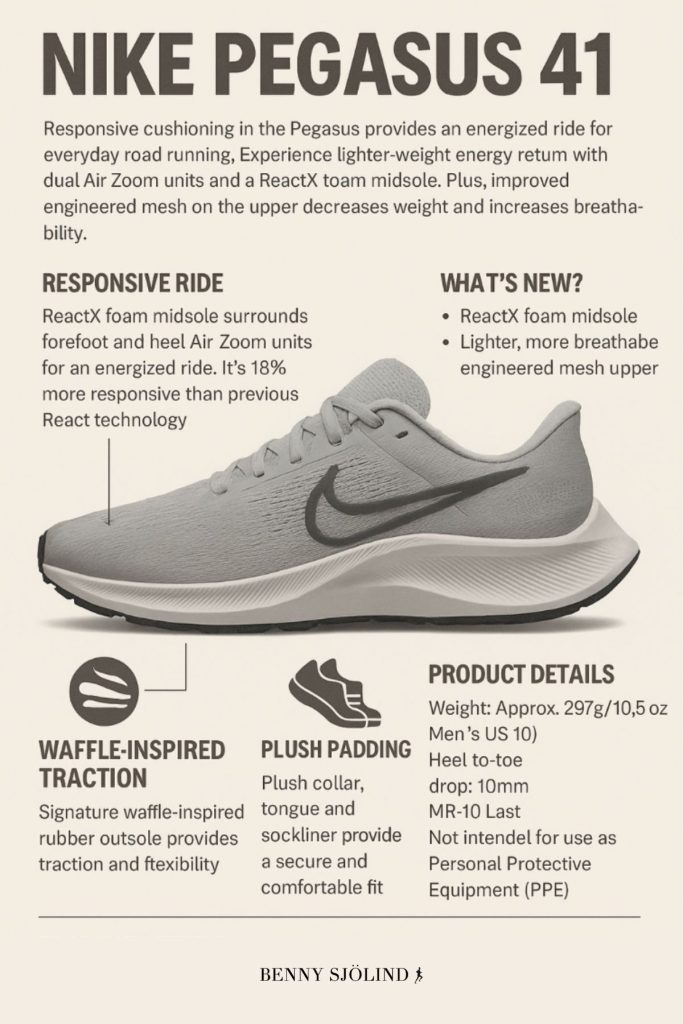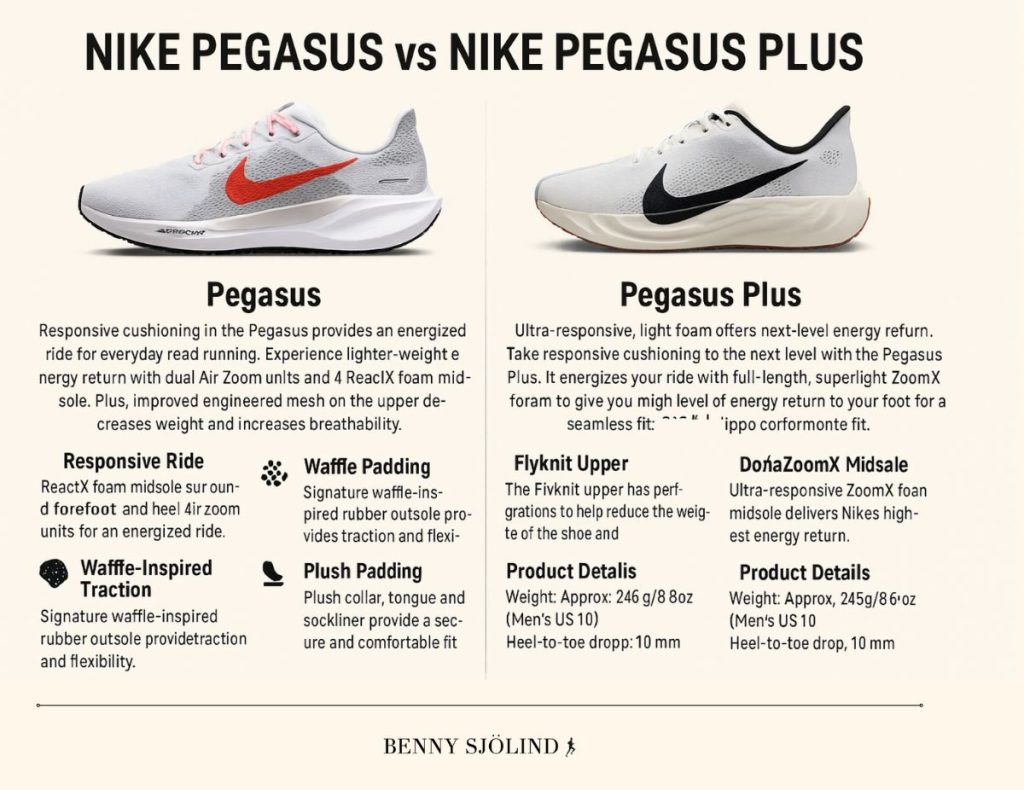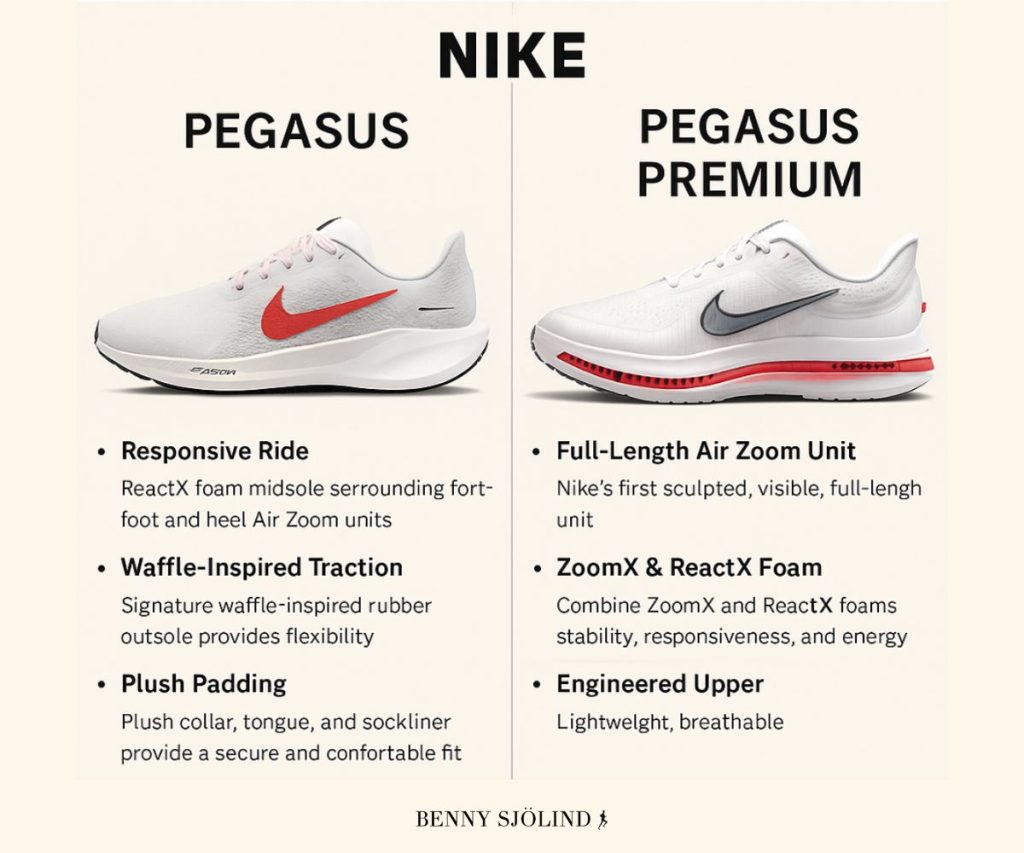The Nike Pegasus line has been a cornerstone of running footwear since its debut in 1983, celebrated for its blend of comfort, durability, and performance. Over the decades, it has evolved through numerous iterations, each bringing enhancements to meet the needs of runners worldwide.
Nike Pegasus 42 Release Date
The Nike Pegasus 42 is anticipated to release summer 2025 . While specific details about the release date and features are yet to be officially announced, the running community eagerly awaits updates on this next iteration of the beloved Pegasus line.
Some online sources have estimated that the Nike Pegasus 42 will be launched in June 2025, but this is unlikely as no press release has been issued yet. Nike usually announces new shoe models a couple of months in advance.
However, sometimes the news only comes a few weeks before, as was the case with the latest Nike Structure model. Last year, the Nike Pegasus 41 was launched in June, but it is more likely that the Nike Pegasus will be released in July 2025 this year.
Nike Pegasus 41 – The Latest Model
The Nike Pegasus 41 isn’t just another yearly update—it’s a bold step forward in one of the most beloved running shoe series ever made. As someone who’s logged hundreds of miles in multiple versions of the Pegasus, I can say this model stands out.
It blends the heritage comfort and reliability of the franchise with real performance gains that you actually feelunderfoot.
What’s New in the Pegasus 41?
At first glance, it still looks like a Pegasus. But once you lace it up, the difference is immediate. This summer’s big leap? The introduction of full-length ReactX foam—a brand-new midsole compound that offers over 13% more energy return than last year’s React foam.
That bounce you get with each step? It’s not just marketing hype. You genuinely feel a springier transition whether you’re out for a tempo session or doing an easy recovery run. And the dual Air Zoom units—one in the forefoot, one in the heel—anchor that bounce in a responsive, cushioned ride that has become the Pegasus trademark.
Nike also made some quiet but important changes to the upper. The new engineered mesh is lighter and more breathable, while the Dynamic Midfoot Fit system locks in your foot without pressure points. It’s that kind of small, thoughtful detail that keeps the Pegasus near the top of the pack year after year.
Nike Pegasus 41 – Fact Box
| Feature | Details |
|---|---|
| Release Date | June 2024 |
| Midsole | Full-length ReactX Foam |
| Cushioning | Dual Air Zoom Units (Forefoot + Heel) |
| Upper | Lightweight engineered mesh |
| Fit System | Dynamic Midfoot Fit with internal support band |
| Sustainability | 43% lower carbon footprint in midsole manufacturing |
| Use Case | Daily trainer – suitable for easy runs, long runs, and light tempo work |
| Retail Price | ~$140 USD |
Pros and Cons
➕ Pros
- Excellent energy return with new ReactX foam
- Soft but responsive cushioning thanks to Air Zoom units
- Improved upper fit and breathability
- Versatile for various run types and paces
- Lower environmental impact in production
➖ Cons
- May still feel too soft for runners preferring a firmer ride
- Slightly heavier than some ultralight trainers
- Design updates are subtle—may feel too familiar for some
Rating
| Category | Score (1–5) |
|---|---|
| Cushioning | ⭐⭐⭐⭐⭐ |
| Responsiveness | ⭐⭐⭐⭐☆ |
| Comfort & Fit | ⭐⭐⭐⭐⭐ |
| Versatility | ⭐⭐⭐⭐☆ |
| Sustainability | ⭐⭐⭐⭐☆ |
| Overall | ⭐⭐⭐⭐⭐ |
The Nike Pegasus 41 doesn’t reinvent the wheel—it refines it with precision. If you’re already a Pegasus fan, this version feels like a reward for your loyalty. If you’re new to the line, there’s never been a better time to jump in.
The ReactX foam really does bring new life into your stride, and with the breathable upper and Zoom cushioning, this is a shoe that wantsyou to go the extra mile.
Whether you’re training for a race or just heading out for your daily run, the Pegasus 41 is one of the most dependable and enjoyable shoes Nike has released in years.
Nike Pegasus – One of the Most Popular Running Shoes in the World
The Nike Pegasus is not just a classic – it’s a global icon in the world of running shoes. With over 110,000 monthly searches on Google in the United States alone (according to Answer the Public), it stands shoulder to shoulder with other top-tier models like the Brooks Ghost, which sees similar domestic interest.
It is by far the most popular model of running shoes from Nike.
However, what truly sets the Pegasus apart is its worldwide appeal. While Brooks Ghost has a loyal following, especially in North America, the Nike Pegasus dominates international markets thanks to Nike’s strong global brand presence, sleek design language, and consistent performance updates.
Whether you’re running in New York, Tokyo, Berlin, or Sydney, chances are you’ll spot a pair of Pegasus on the roads or in the gym.
This long-standing popularity is a testament to the model’s versatility, comfort, and innovation, making it a trusted choice for millions of runners around the world—from beginners to marathon veterans
Evolution of the Nike Pegasus Series
The Pegasus series has consistently delivered reliable daily trainers suitable for various running levels. The Nike Pegasus 41, for instance, introduced ReactX foam, offering improved energy return and stability, particularly benefiting heel strikers .
Its design focused on enhanced breathability and a plush upper, ensuring comfort during runs.
Looking Ahead
As the Pegasus series continues to evolve, runners can expect Nike to incorporate advanced technologies and design improvements to enhance performance and comfort. The upcoming Pegasus 42 is poised to build upon the strong foundation of its predecessors, aiming to meet the dynamic needs of modern runners.
Nike Pegasus vs Pegasus Plus: What’s the Difference?
| Feature | Nike Pegasus | Nike Pegasus Plus |
|---|---|---|
| Purpose | Daily running shoe | Lifestyle/sportstyle version of Pegasus |
| Performance Features | High-performance midsole (Zoom Air, ReactX) | May include similar sole but optimized for style |
| Fit and Feel | Snug, performance-driven fit | Roomier, more casual fit |
| Design Focus | Engineered mesh, running-specific support | More stylish materials, streetwear aesthetics |
| Use Case | Road running, treadmill, light training | Walking, casual wear, everyday use |
| Weight | Lightweight for performance | Slightly heavier due to added materials |
| Price Point | Typically $130–$150 USD | Similar or slightly more due to style elements |
Which Should You Choose?
- Choose Nike Pegasus if you want a reliable, high-performance running shoe built for mileage and speed.
- Choose Nike Pegasus Plus if you prioritize style, versatility, and comfort for everyday wear rather than training.
Nike Pegasus vs Pegasus Premium: Key Differences
| Feature | Nike Pegasus | Nike Pegasus Premium |
|---|---|---|
| Purpose | Daily trainer for runners | Lifestyle-forward with upgraded materials |
| Performance Tech | Zoom Air units + React/ReactX foam | Similar midsole, may prioritize comfort over speed |
| Upper Material | Lightweight mesh for breathability | Premium materials like synthetic suede or woven knit |
| Fit and Feel | Performance fit with heel lockdown | Slightly more relaxed for all-day comfort |
| Style Focus | Built for function first | Elevated design for lifestyle and casual wear |
| Use Case | Running, workouts, treadmill use | Walking, travel, style-conscious everyday wear |
| Weight | Lightweight for speed and agility | Slightly heavier due to richer materials |
| Price | $$ – Mid-range ($130–$150) | $$$ – Premium tier ($160–$180+) |
Which Should You Buy?
- Choose Nike Pegasus if: You’re a runner or fitness enthusiast or if you want a responsive, light, and breathable shoe for active use.
- Choose Nike Pegasus Premium if: You want style and comfort for casual or urban wear, and prioritize aesthetic and material quality over performance features.
Frequently Asked Questions about Nike Pegasus
Why is Nike Pegasus so popular?
The Nike Pegasus is popular because it offers an ideal balance of comfort, durability, and performance at a reasonable price. It has been a staple in Nike’s running lineup since 1983, appealing to both beginners and experienced runners.
With every new version, Nike refines the design and cushioning technologies, such as Zoom Air units and ReactX foam, to keep up with the evolving needs of runners. Its consistent reliability as a daily trainer is a major reason it remains a go-to choice year after year.
What is the Nike Pegasus best for?
The Nike Pegasus is best for:
- Daily training for short and long runs
- Recovery runs, thanks to its plush midsole
- Treadmill and road running
- General fitness use, including cross-training
Its versatility makes it suitable for a wide range of workouts, although it’s not designed as a racing flat or for speed-specific sessions.
What is so special about Pegasus?
What sets the Pegasus apart is its combination of:
- All-around performance: Suitable for most runners and workouts
- Longevity: Built to last 300–500 miles
- Continuous innovation: Every new version improves upon fit, breathability, and responsiveness
- Heritage: Over 40 years of history in Nike’s lineup
It’s essentially the “Swiss Army knife” of running shoes—reliable in most conditions and appreciated for its comfort and adaptability.
Can you wear Nike Pegasus for walking?
Yes, absolutely. The Nike Pegasus is excellent for walking due to its:
- Cushioned midsole
- Supportive fit
- Lightweight design
- Breathable upper
Many people use it as an all-day shoe for casual wear, long walks, and even travel.
What is Nike’s #1 selling shoe?
Nike’s #1 best-selling shoe of all time is the Nike Air Force 1.
While not a running shoe, the Air Force 1 dominates global sales due to its cultural relevance, style versatility, and streetwear appeal.
In the running category, however, the Nike Pegasus is one of their top-selling performance models globally.




